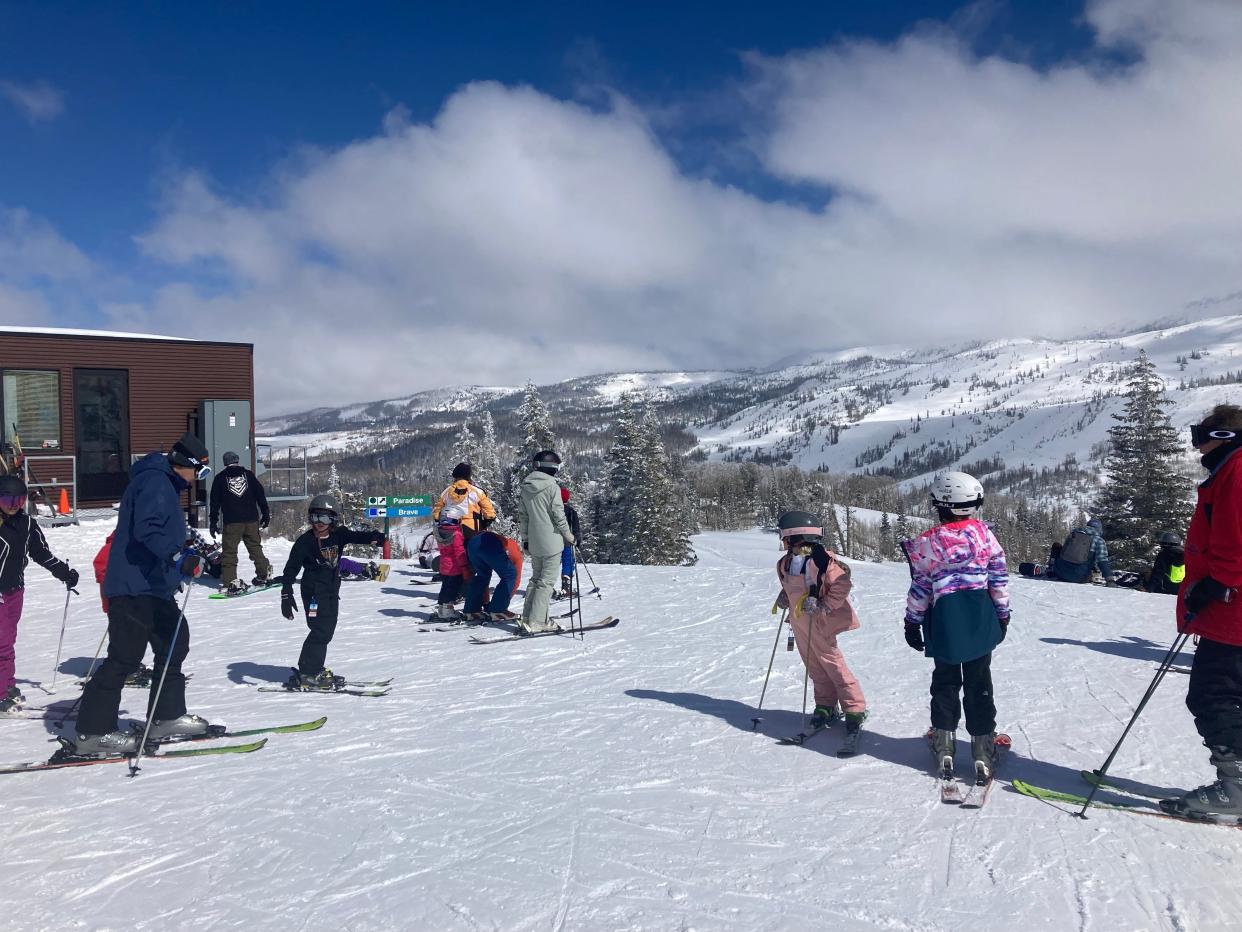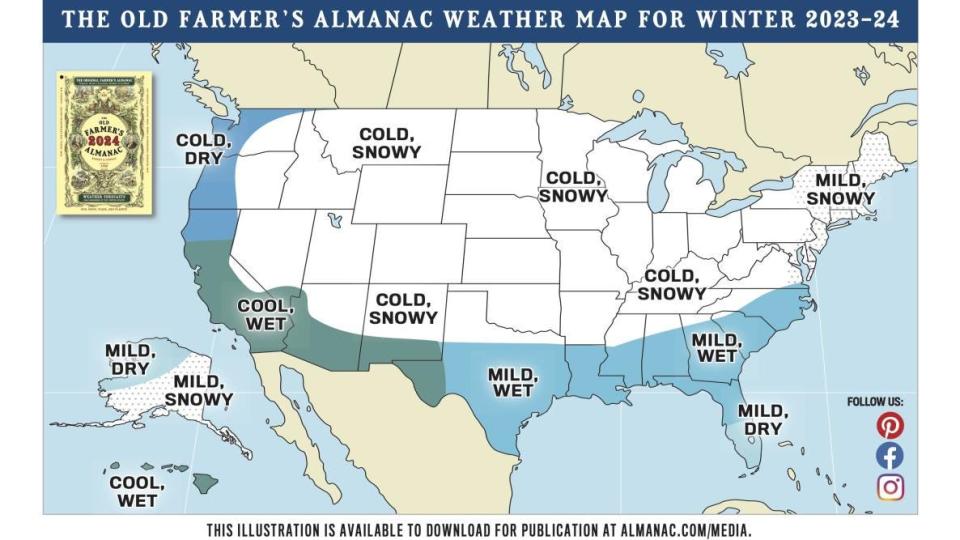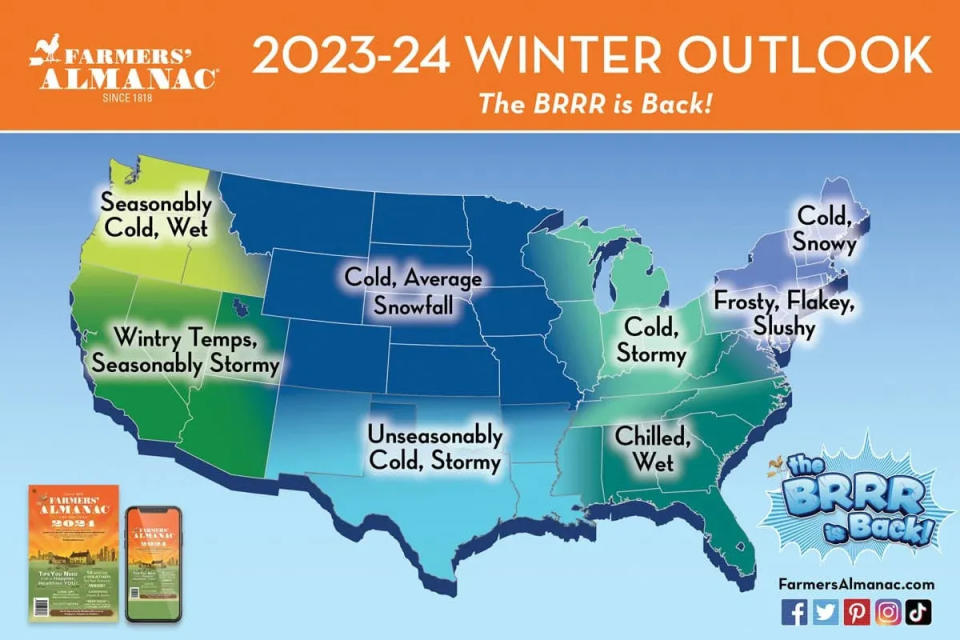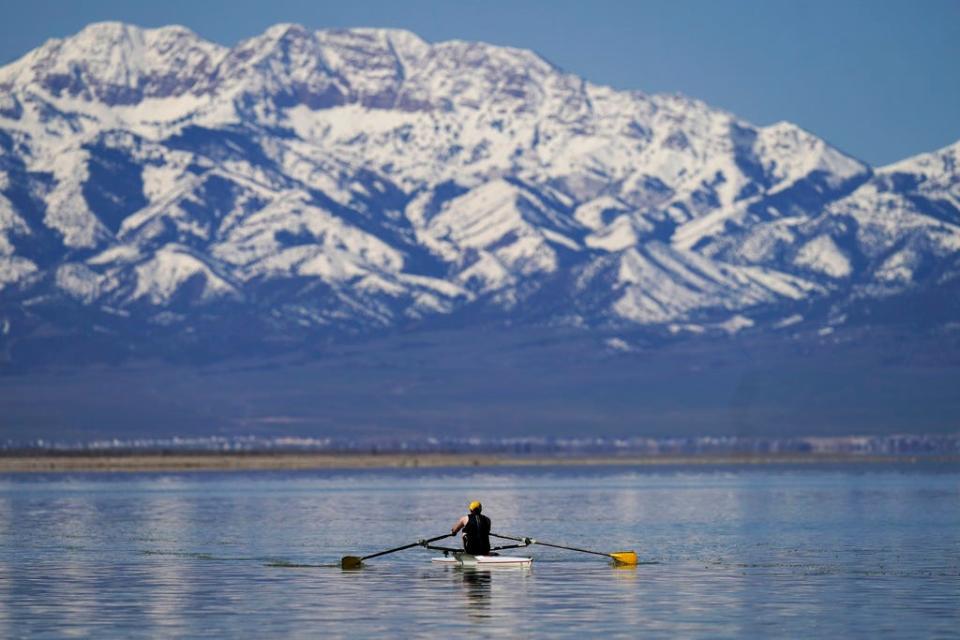Utah's long-term forecast: What the almanacs are predicting for winter 2024

The prediction from Old Farmer's Almanac that Utah would have a "warm, wet" winter season last year turned out to be at least partly accurate.
After a wet end of 2022, the first few months of the new year were among the snowiest on record, and by spring, the state, like most of the West, had counted record amounts of snowpack, according to the Utah Division of Water Resources.
And while it wasn't necessarily a "warm" winter overall, temperatures across most of the state were at or above normal for the back half of the winter.
A rival publication, The Farmers' Almanac — first published in 1818, 26 years after the first Old Farmer’s Almanac — had made a more measured but ultimately wrong forecast, predicting mild temperatures and a dry winter winter.
But what are they saying will happen this coming winter?
Those two publications have released their outlooks for the coming winter, and they have different ideas on what's coming.
2024 winter forecasts

This year, both of the publications have very similar predictions: a cold, snowy winter across most the U.S., including across Utah and the rest of the intermountain West.
The Old Farmer's Almanac predicts colder-than-normal and snowier-than-normal conditions across most of the country, ranging from Nevada westward all the way to Virginia, and including everything to the north.
"Most areas of the United States that typically see snow should be prepared for crisp temperatures and oodles of fluffy white throughout the season," suggests the almanac's forecast. "Snow totals will be at or slightly above normal, with just the right amount of chill in the air for an afternoon of adventurous snow sports or enjoying a big ol’ mug of hot cocoa by a crackling fire."
The Farmers' Almanac mostly agrees, declaring "the brrr is back!" for next winter, with "plenty of cold temperatures and occasional bouts of storminess, bringing widespread rains and snows" to a wide band of the country across the Great Plains and Rockies.
Utah sits right on the border of two regions where the publication expects different conditions — a mostly "average" winter across the Southwest but a cold, snowy season across the central plains and Rockies.

Both forecasts match at least in part with the official long-term forecasts published by the federal government, with the National Weather Service and its teams of meteorologists expecting higher-than-normal temperatures but a good chance of wet conditions through at least November in its latest three-months-out forecast.
How they make their forecasts
The two magazines base their forecasts on secret formulas; both admit that sunspots play a role. Sunspots are comparatively darker, cooler areas on the sun’s surface caused by disruptions in its magnetic field.
The Old Farmer’s Almanac’s formula has adapted a little over time (climate change factors into its predictions), but the Farmers’ Almanac has remained consistent for centuries.
The Farmers' Almanac forecast looks back to a time when people observed things going on with plants, animals and other aspects of the environment to get insight into what was happening with the weather.
In a 2018 interview with The Arizona Republic, Farmers' Almanac editor Peter Geiger said their forecast is made about two years in advance to coincide with the publication’s print production schedule and other factors. Though the magazine is online, it has resisted the urge to update the forecast there.
The Old Farmer’s Almanac formula includes historical data, meteorology and the influence of climate change in addition to sunspots.
Are the forecasts accurate?

Popular with readers for more than a century, the Old Farmer's Almanac combines forecasts with useful items like full moon dates, recipes, gardening tips and self-help ideas.
But while the publication has graded itself as sporting an accuracy rate of about 80%, some weather experts say that any longer-term weather predictions should be taken with a grain of salt.
But these big-picture weather predictions should be taken with a grain of salt, some weather experts say.
An accuracy review of Old Farmer's Almanac released by meteorologist Jan Null gave out grades to the publication's winter forecast from 2016 and 2017 based on how its projections compared to the actual weather observed in regions across the U.S. Using a simple formula that rated the predictions as either "good", "bad, or "mixed" — if a region was supposed to have a dry season but actually saw above-average precipitation, for example, it rated as "bad" — Null found that just 25% of the 57 regions reviewed had a "good" rating for precipitation predictions.
For temperature predictions during that same time span, the almanac earned a "good" accuracy rating on just under 33% of the 52 regions reviewed.
Similarly, a review by OpenSnow, which does snow forecasting and predicts ski conditions, found "no track record of accuracy" in a review of 2013-14 winter weather predictions.
Both the Old Farmer's Almanac and the Farmers' Almanac claim high accuracy rates achieved by looking at how close their predictions come to what actually happens in the various regions of the country and Canada, saying they've been right about 80% of the time over their histories.
David DeMille writes for The Spectrum & Daily News, a USA TODAY Network newsroom based in southern Utah. To support and sustain this work, please subscribe today.
This article originally appeared on St. George Spectrum & Daily News: Utah's long-term forecast: What the almanacs are predicting for winter

